Edible Rainbow Sensory Bin for Toddlers
Even though all of the kids loved our Barley Rainbow Sensory Bin, I wanted to create something a bit more toddler-friendly, one that they could just enjoy without as much correction or me worrying about the digestive consequences of uncooked barley.
This Edible Rainbow Sensory Bin was super easy to make — as simple as sorting out some Froot Loops — and was played with for hours throughout the week (before I decided that the cereal had been handled enough to warrant throwing it out).
I started off the day by giving Ella a bit of a breakfast prank — a giant bowl of Froot Loops for breakfast!
Clearly, she knew something was going on…
After letting her taste a few Froot Loops, we moved on to sorting out the Froot Loops by colour. This was a long process, and in true Montessori Method style, I left the bin accessible for the children to come help when they wanted — as long as they washed their hands first.
This took up the better part of the morning because we were going at such a relaxed pace, but if you were doing this bin as a surprise or if I had all of the children helping at once, it could probably be done in less than twenty minutes.
I used two giant Family-sized boxes of Froot Loops to fill this bin. I prepared spoons, measuring cups, and funnels for this bin.
I purposely chose simple manipulatives geared for the toddlers for this activity, but I knew the preschoolers would just be enthralled that they were given “hotel cereal” to play with (and discreetly snack on) and wouldn’t mind the simpler play.
I had them all wash their hands and meet me in the living room for the “unveiling…”
Initially, all of the children wanted to taste the sensory bin, and while the point of this activity was that it was edible and safe for the toddlers, I worked with each of the younger children to show them how else they could play with the bin.
The big kids led by example, but were all too happy to sneak tastes. As long as there was more playing than snacking, I didn’t say anything.
Sensory bins are wonderful for developing fine motor skills, developing sensory perception (which aids in brain growth and development), and exposing children to new concepts — but sensory bins only work if the sensory play is fun. Children’s brains will not receive the information in the same way if they are stressed out during the sensory activity.
The big kids still managed to develop their own play from this simple sensory bin — Mister E asked Ella to “scoop him some ice cream” while Miss I decided that she was at the beach eating french fries from a cone, which prompted a bit of a cultural conversation about how french fries are called chips and packaged differently in England than in North America.
The toddlers favourite activities (after eating) were scooping the Froot Loops, scattering them around in the bin with their hands in a sweeping motion, and holding the Froot Loops high above the bin and dropping them.
We also worked on noticing if Froot Loops fell outside of the bin and using our pincer grips to pick them up and return them to the bin. One of the toddlers decided that was her favourite activity and she spent the 45 minutes we spent with this bin walking around and cleaning up after all of her messy friends!
We had so much fun with this Edible Rainbow Sensory Bin, while there are objections to using edible materials for play, this bin has helped solidify me as being a huge fan of it. Watching how engaged the toddlers became in this bin compared to our previous attempts was revealing — they are all at the end of the oral phase of exploration, so allowing them to embrace that, and meeting them where they are, engaged them in a different way than putting out safe-to-mouth objects that didn’t have the same sensory feedback and pleasure. They played more than I thought they would, and ate less.
Of course, the bin was slightly messier and less full at the end than when we had started.
If you’re looking at this post around St. Patrick’s Day, here are some other fun St. Patrick’s Day sensory play activities from some other bloggers that you might enjoy:
Rainbow Resist Art Painting from Bare Feet on the Dashboard
Rainbow Cellophane Suncatcher from Peakle Pie
Savoury Shamrocks from Multicraftingmummy
Irish Soda Bread from Betsy’s Photography
Engineering Challenge: Build a Leprechaun Trap from Hand Made Kids Art
Colorful Four-Leaf Clover from Mom on the Move
Edible Rainbow Tuff Spot from Adventures of Adam
Shamrock Letter Match from Something 2 Offer
Rainbow Fairy Cakes from Messy Little Monster
For more fun rainbow-inspired activities, check out our collection of 50+ Rainbow Crafts, Activities & Snacks here – or jump right to our Rainbow Barley Sensory Bin or Rainbow Paper Plate Loom.
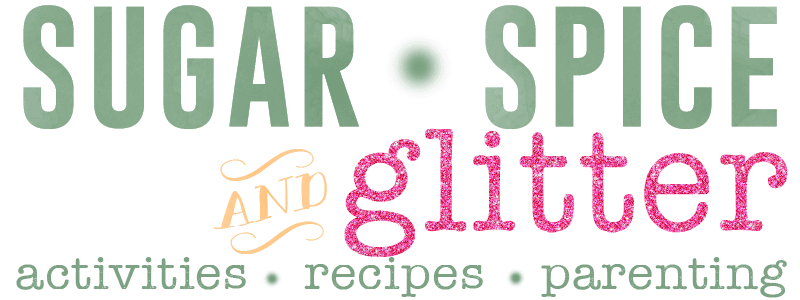
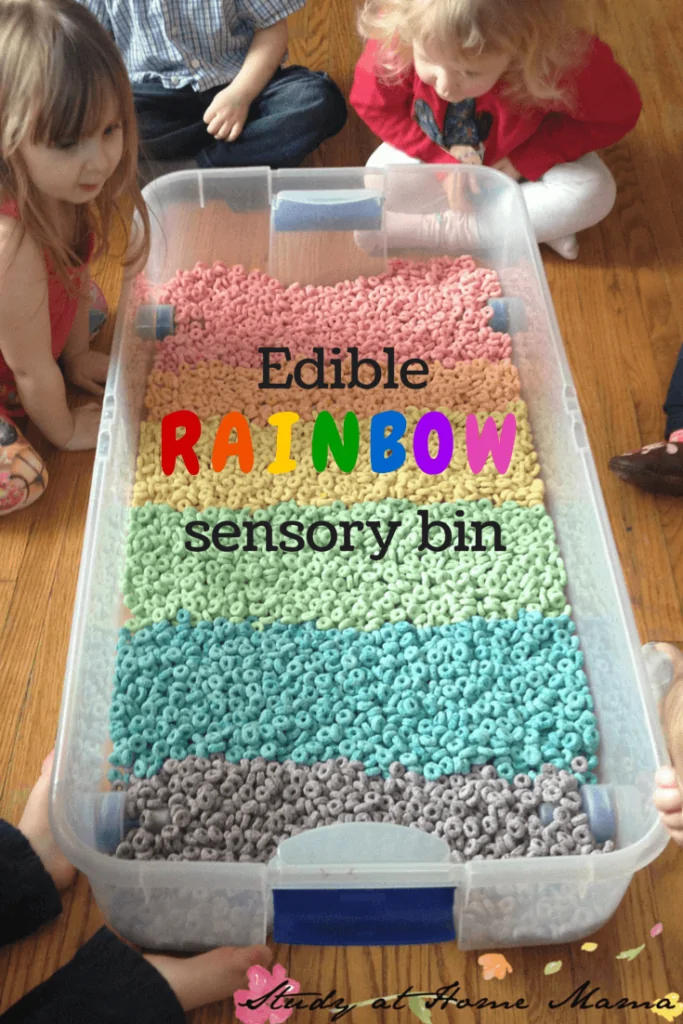
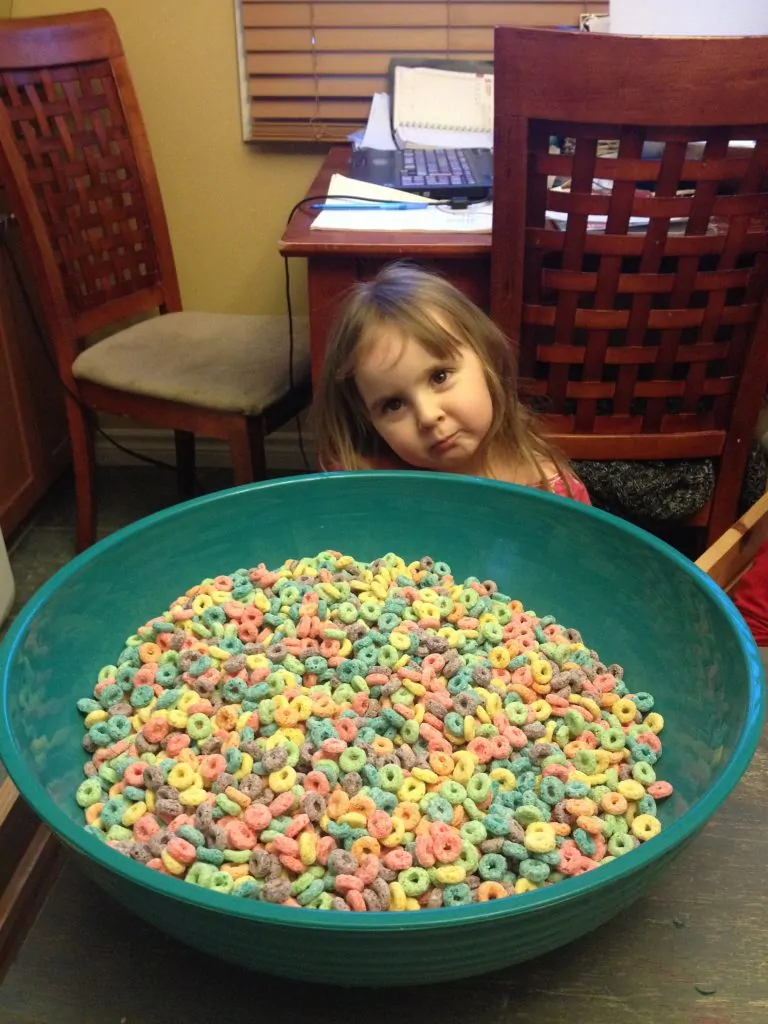
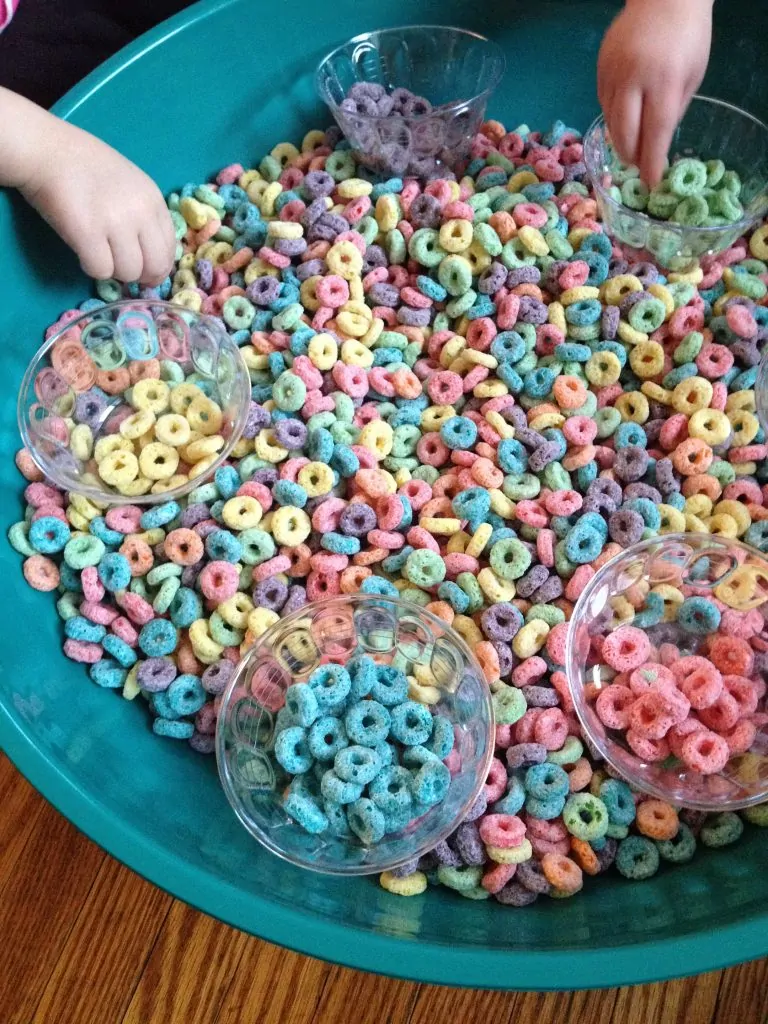
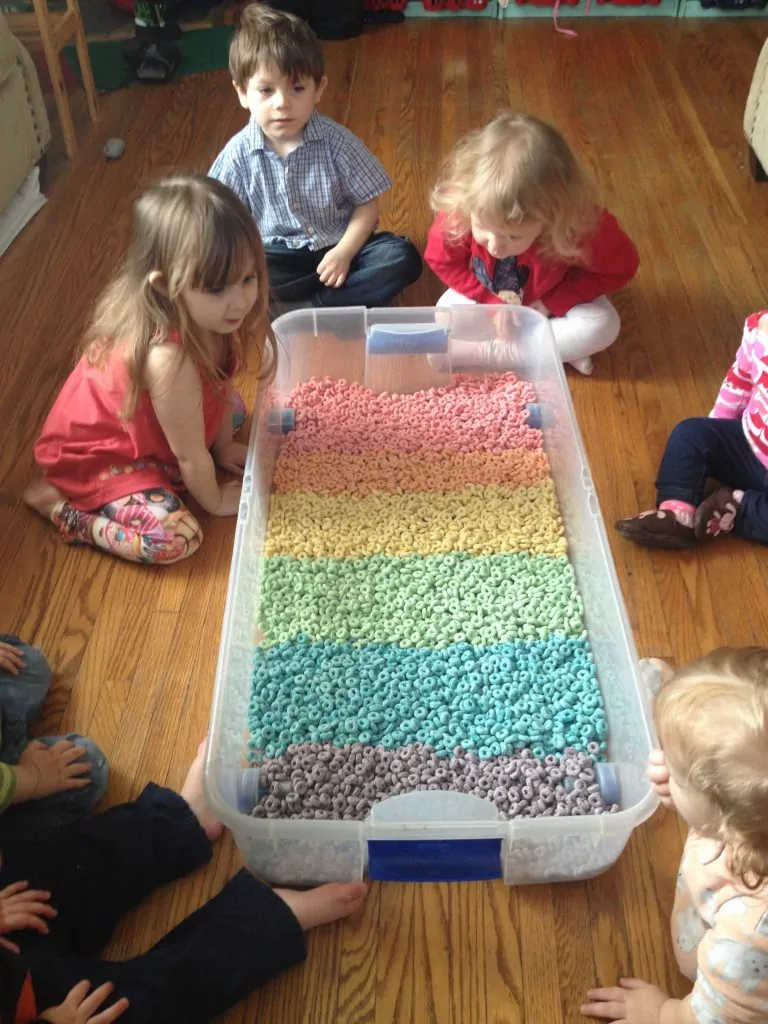
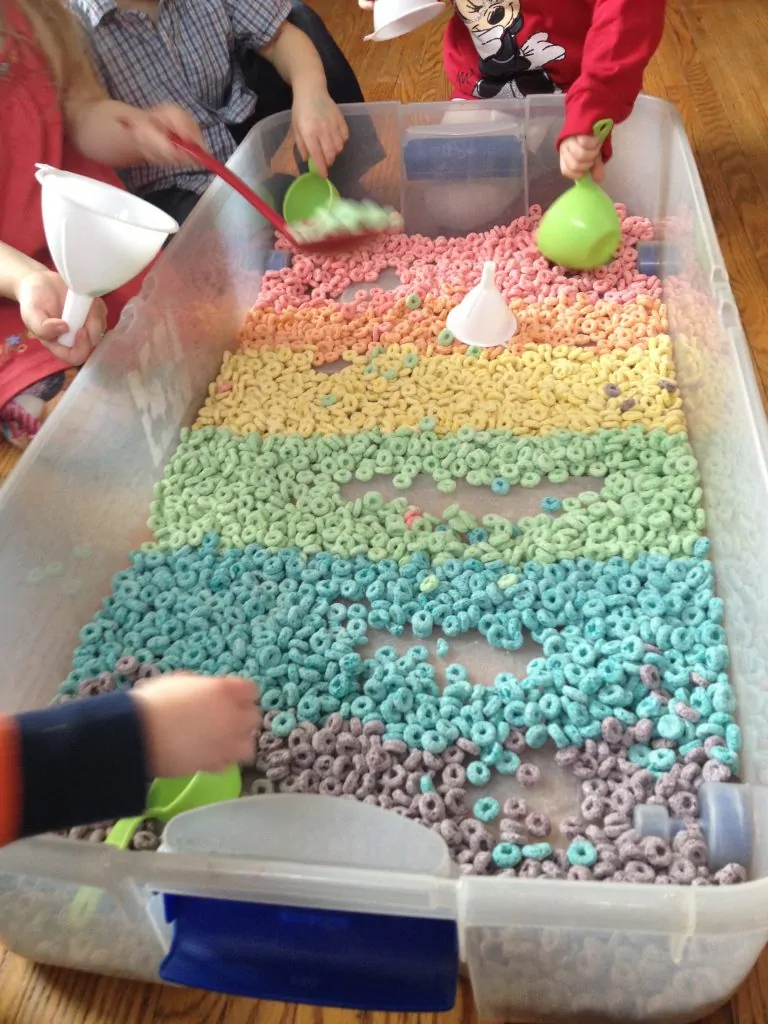
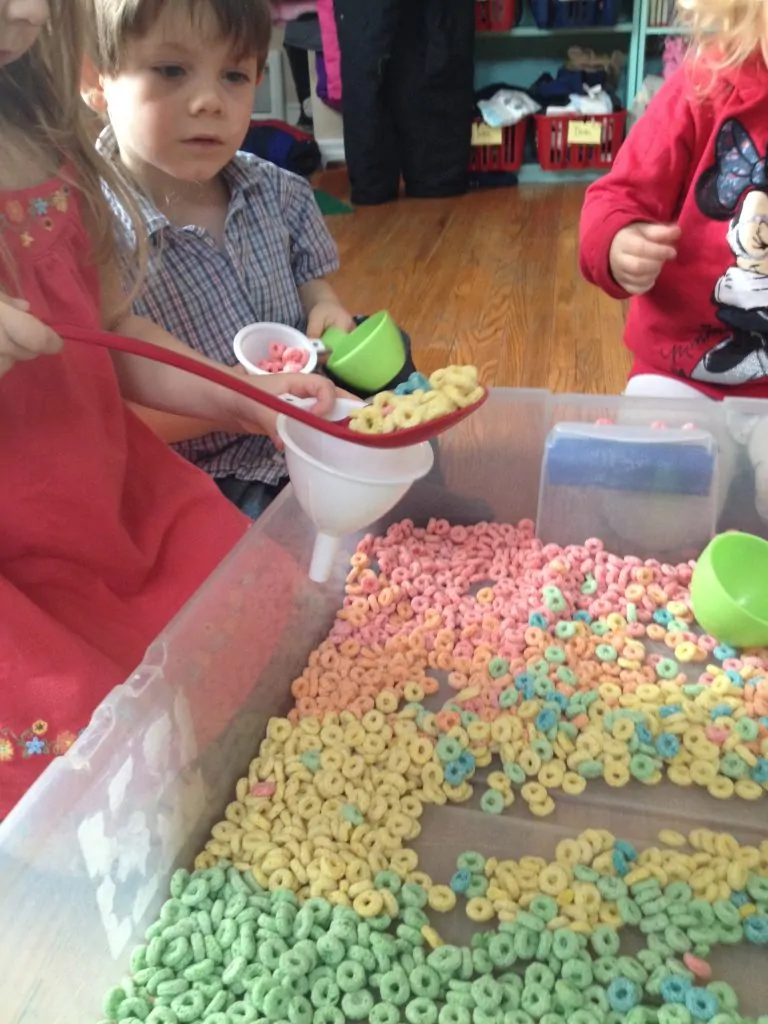
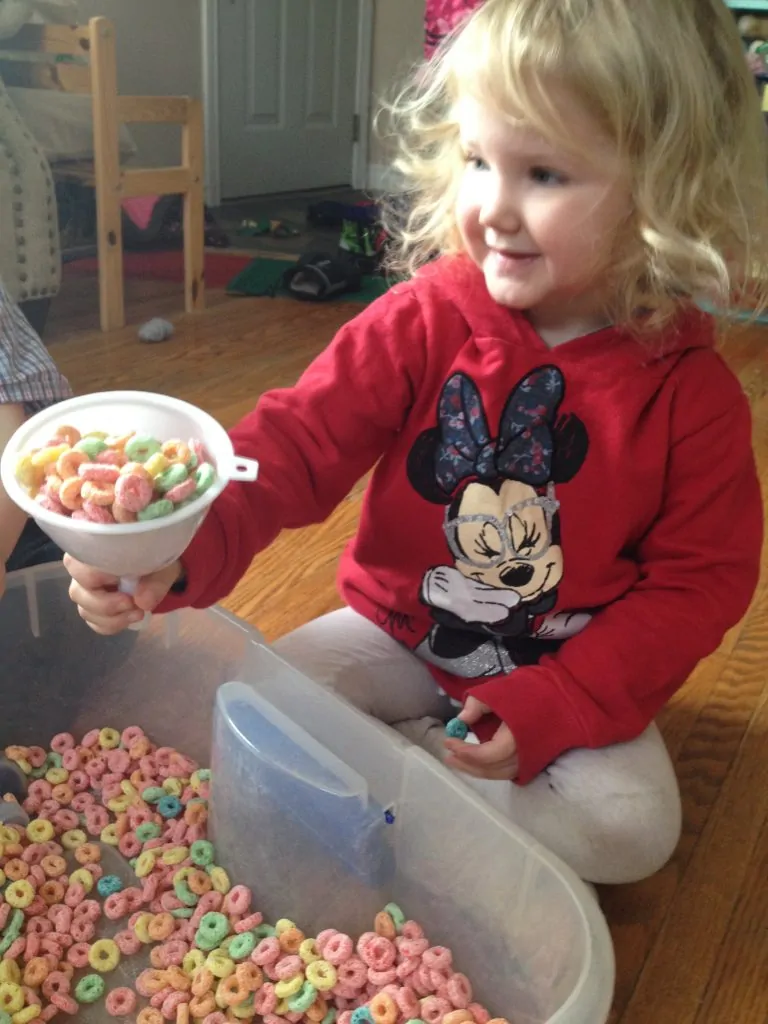
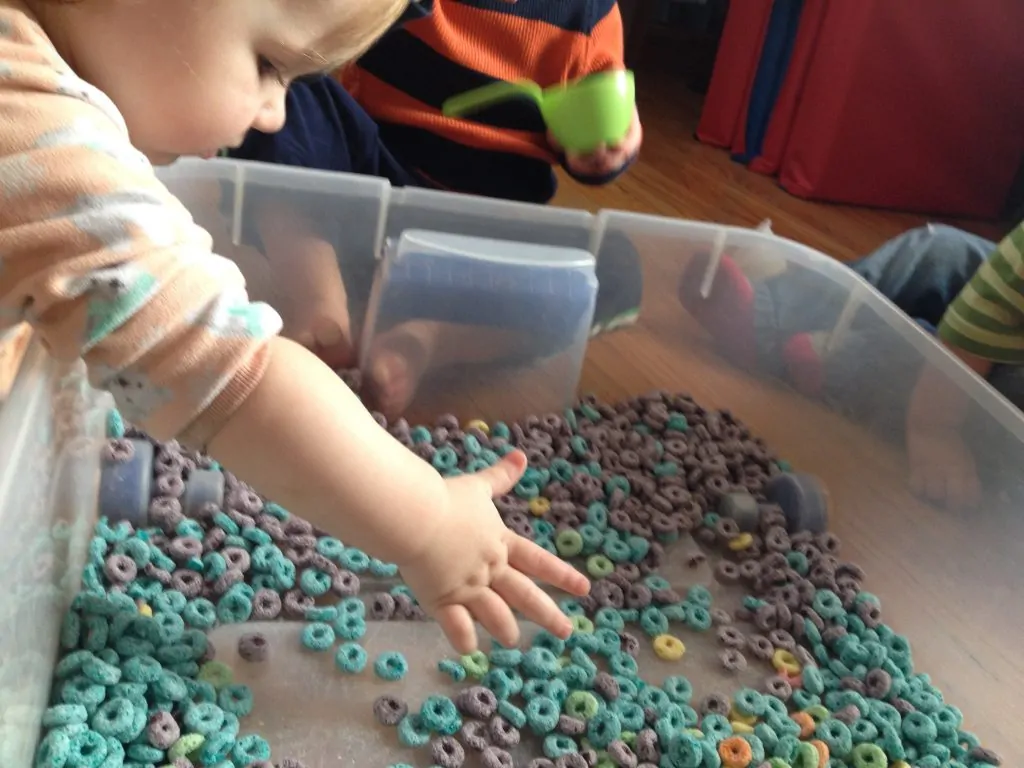

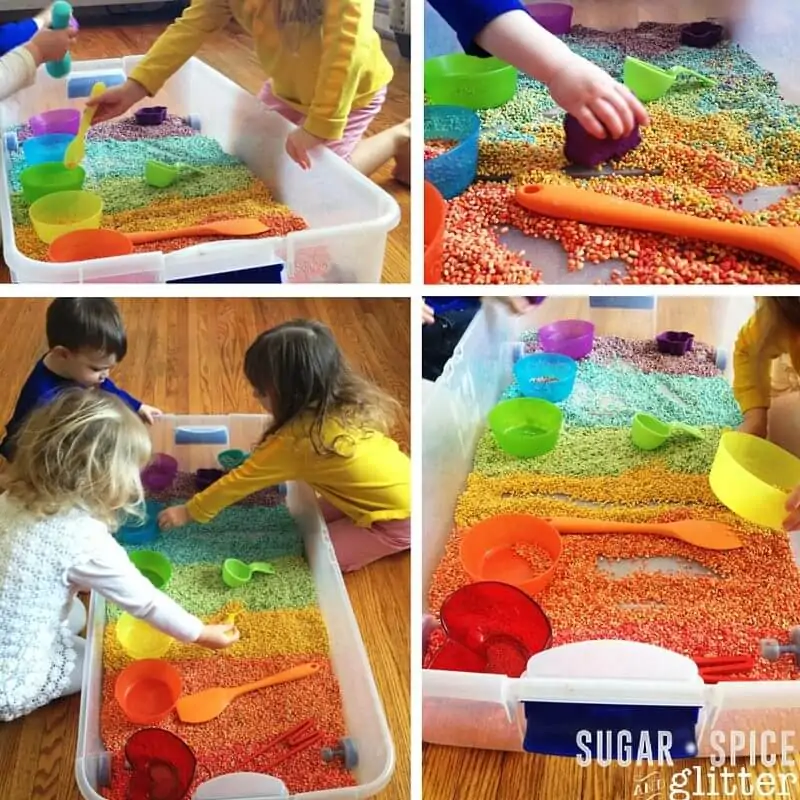
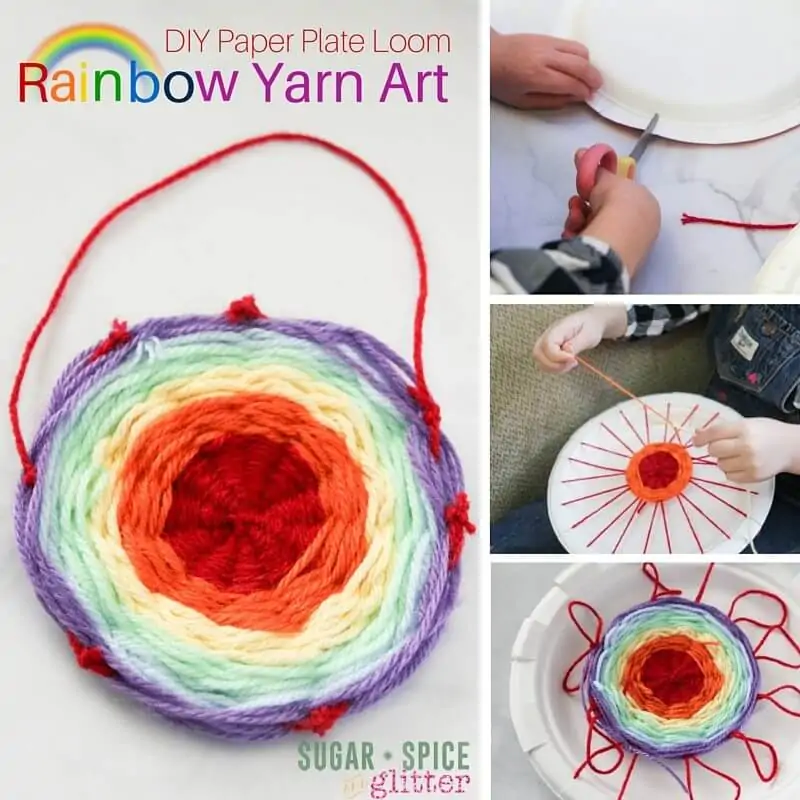
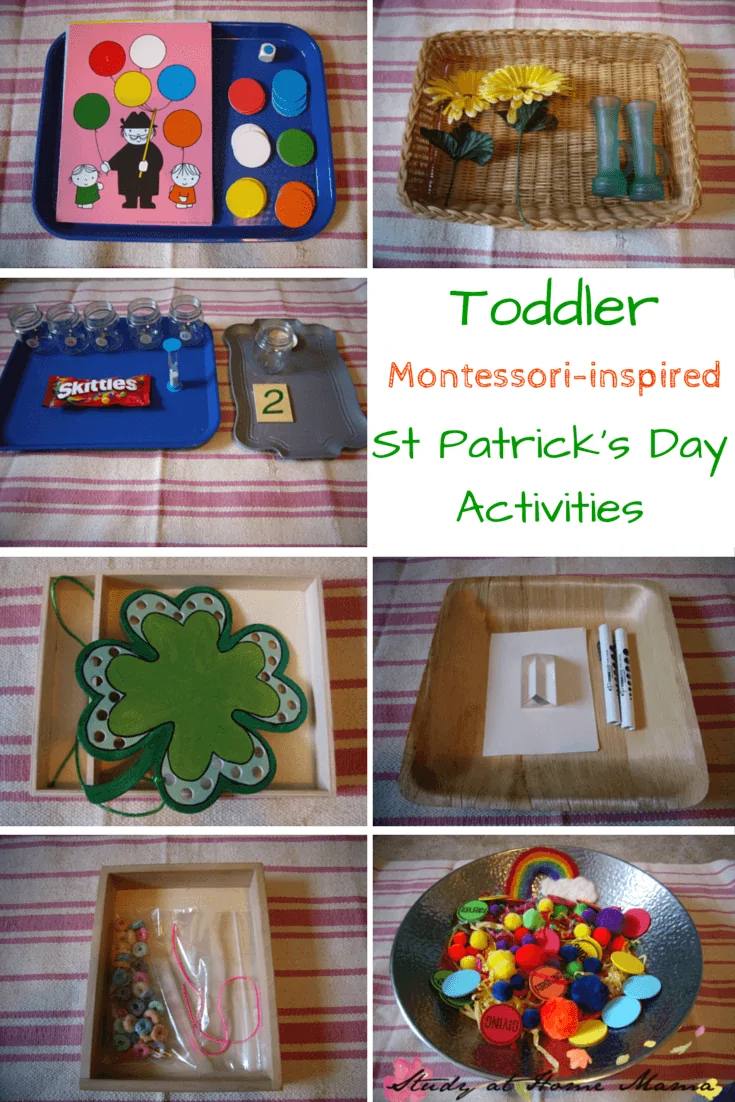
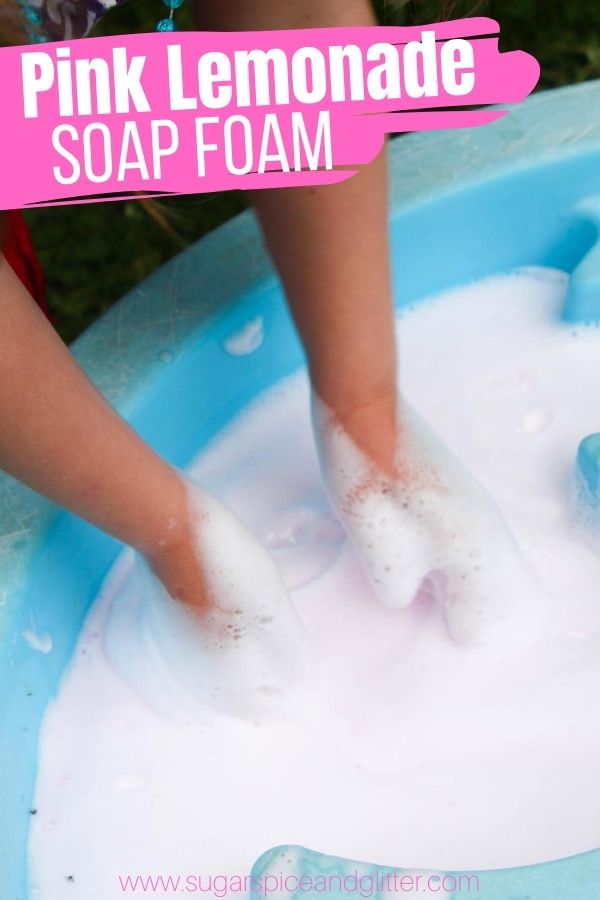
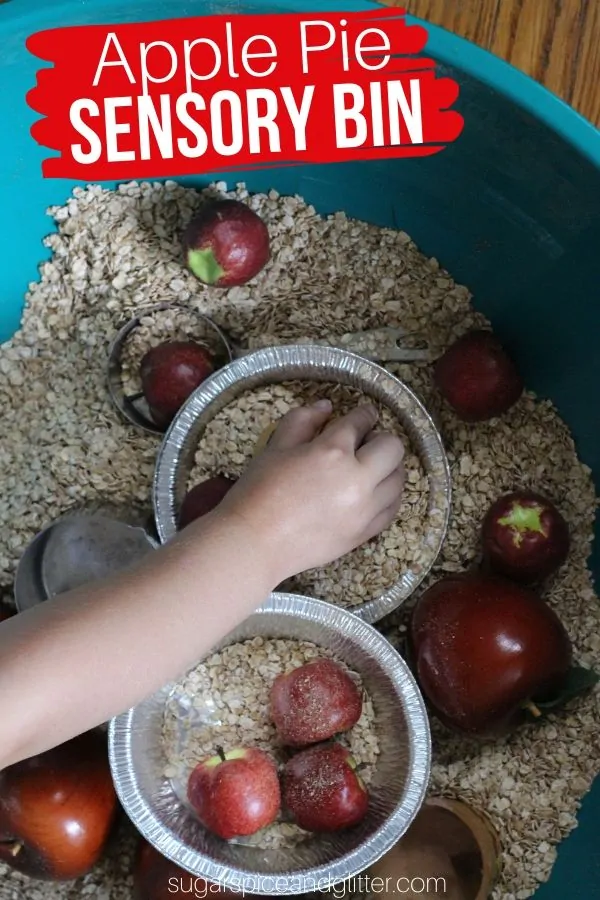
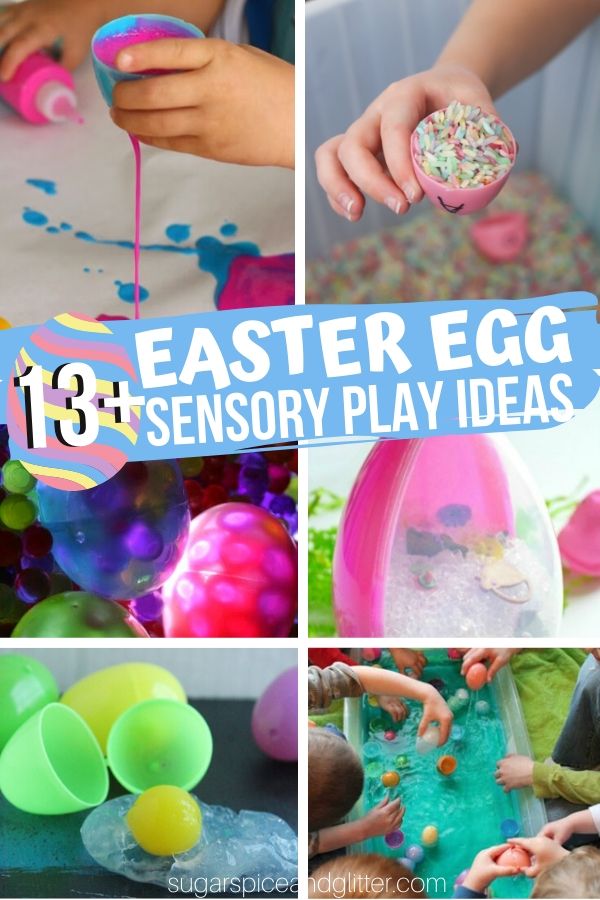
Wow! This took patience… 🙂 Fun!
Haha, that it did! Thanks 🙂
My little man has Autism & sensory issues, he’s also very oral & puts everything in his mount except what I actually want him to eat! It’s great finding safe ‘edible’ ideas to stimulate him 🙂 #ToddlerFunFriday
Oh, I hope he likes this one — my children with sensory issues loved it, but I so understand the struggle! We sometimes have some epic fails in my quest for sensory activities! Thanks for stopping by!
Such a cute idea!! Great for learning colors!
Thank you, Ali!